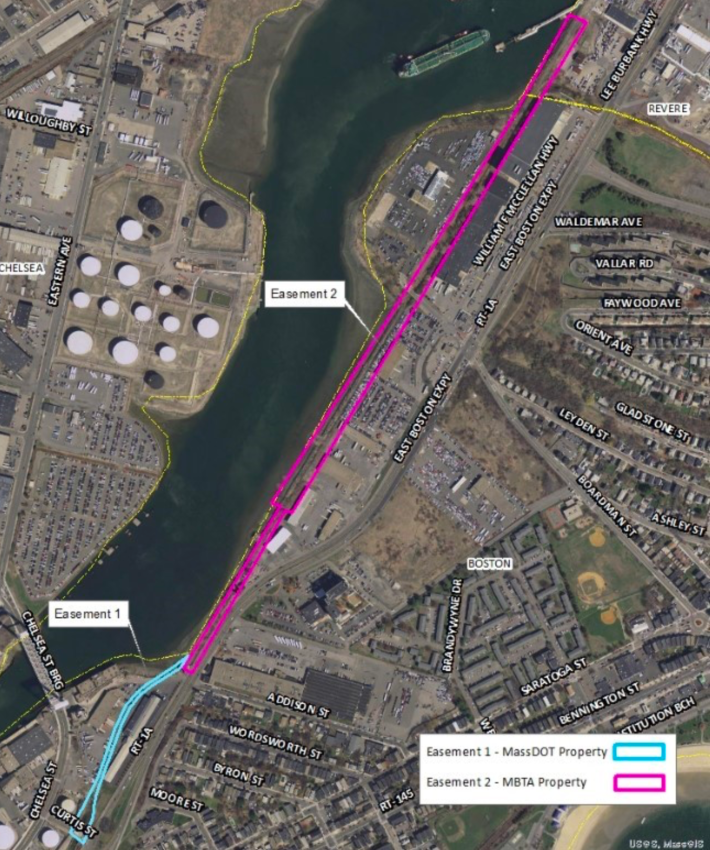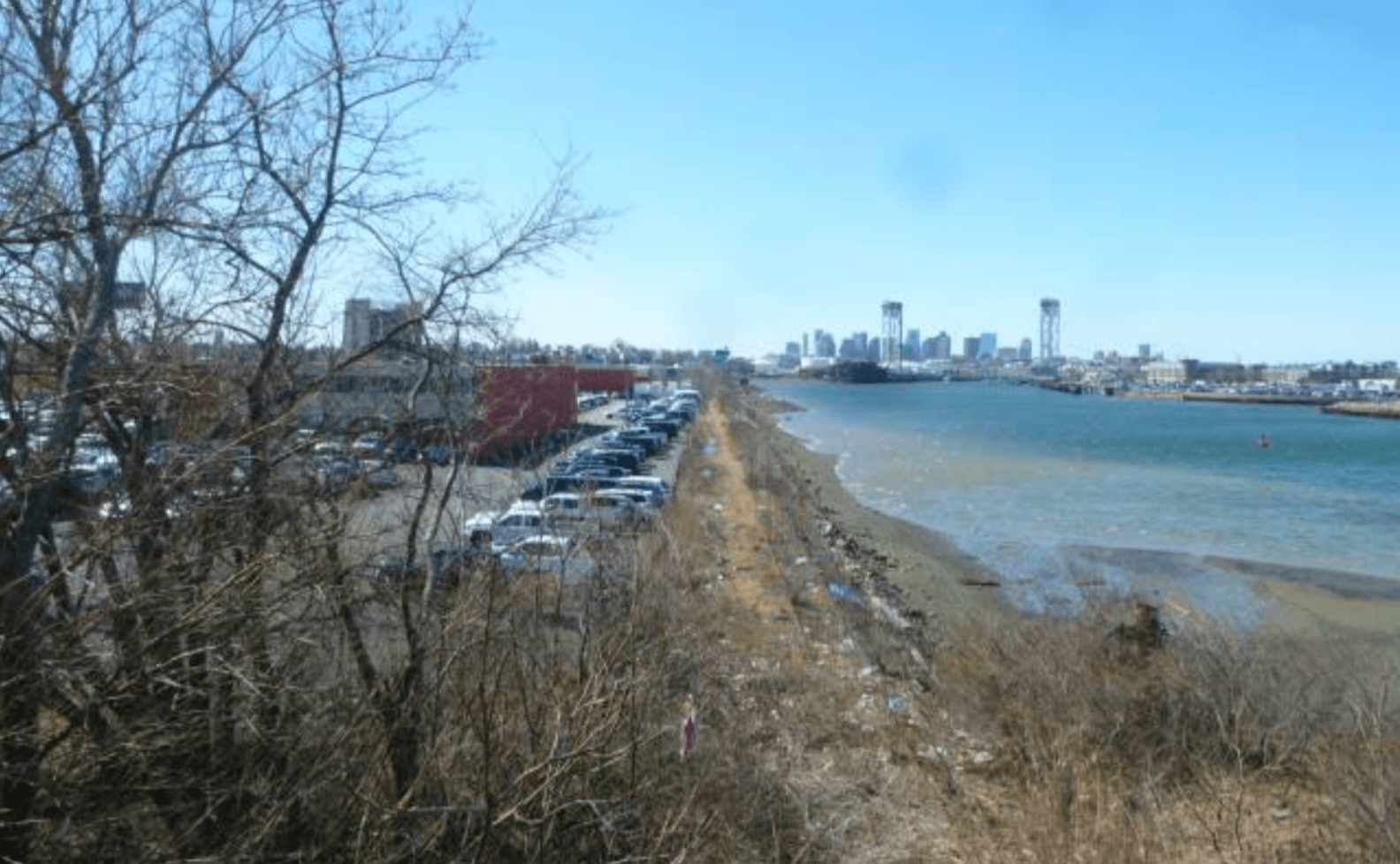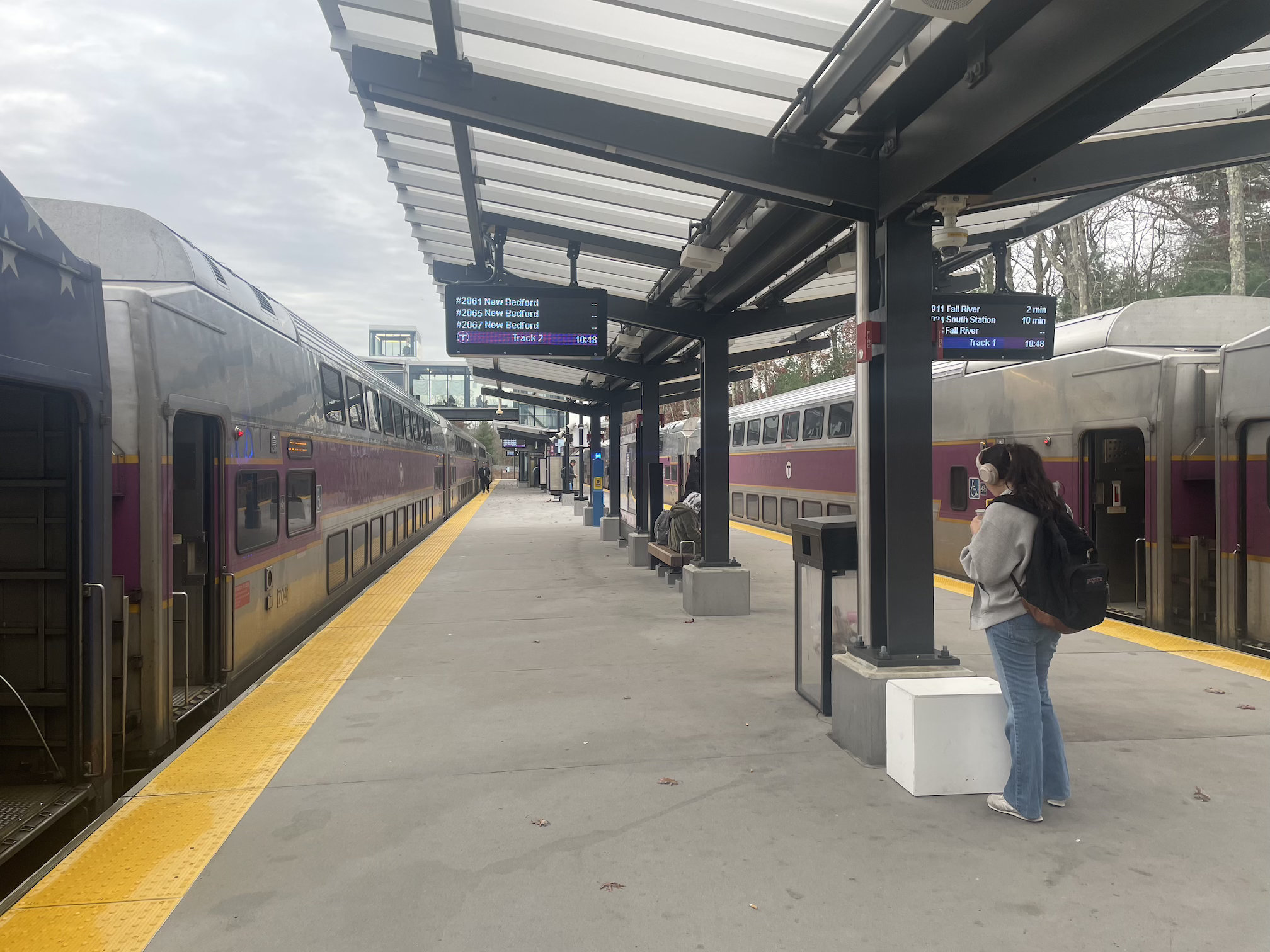Two former state Secretaries of Transportation are raising serious concerns over the MBTA's attempts to sell easement rights to private developers for the use of an abandoned mile-long rail corridor along the Chelsea Creek waterfront in East Boston.
The former railroad right-of-way, which extends from the Chelsea Street bridge northward into Revere, runs parallel to the congested McClellan Highway (Route 1A) to the doorstep of a massive planned development at Suffolk Downs, where developers have proposed 10.5 million square feet of new construction on the former racetrack.
MassDOT controls a small portion of the corridor at the southern end, where it links to the Martin A. Coughlin Bypass Road to Logan Airport.

Cargo Ventures, a real estate company, has floated plans to build a privately-owned bypass road along the corridor. The company has also shown neighbors architectural renderings of a massive new parking garage at its truck cargo terminal located at 440/480 McClellan Highway, located at the northern end of the corridor and directly across the street from the Suffolk Downs western access road.
In an "invitation for bids" that was quietly issued on June 21, the MBTA asks developers for offers on "a non-exclusive easement" to the property for a minimum bid price of $2.5 million, plus an agreement for the buyer to build and maintain a public multi-use bike and pedestrian path and flood mitigation improvements along the entire length of the corridor.
Jim Aloisi, a Massachusetts Secretary of Transportation under Governor Deval Patrick and board member of TransitMatters, says it's "astounding" that the state transit agency would consider selling easement rights to a publicly-owned rail line in a growing, increasingly congested neighborhood in an attempt to accommodate even more vehicular traffic.
Aloisi and Frederick Salvucci, Secretary of Transportation under Governor Michael Dukakis, have co-signed a letter to MBTA leadership calling for the bidding process to be called off so that the state can undertake an "objective and transparent process" to evaluate potential public transit options for the corridor.
A new private roadway, they write, "would increase traffic on Route 1A, increase emissions, and exacerbate a growing crisis of traffic congestion and diminished air quality."
"We ask that you take prompt action to rescind this ill-advised (invitation for bids) and advance a comprehensive assessment of this right-of-way that looks at all feasible sustainable mobility options," the letter concludes.
The MBTA's bidding terms do specify that "the MBTA and MassDOT shall retain the right to use any roadway, walkway and other transportation improvements constructed on the easement area."
That language could allow new MBTA bus services to use any privately-built bypass roads along the corridor, but no public plans exist to do so. The southern entrance to the corridor connects directly to the Silver Line SL3 route to Chelsea.
Similarly, the new bike and pedestrian multi-use pathway specified in the bid documents could potentially be a useful waterfront connection from East Boston's established neighborhoods to the new neighborhoods at Suffolk Downs, but only if the new pathway can somehow connect to the existing East Boston Greenway, which is half a mile away from the southern end of the proposed easement corridor.
The release of the MBTA bidding documents was unheralded to a degree that is raising suspicions among MBTA watchdogs. Transit advocates only learned of the proposed sale when a TransitMatters member spotted a legal advertisement in the classifieds section of the Revere Journal in the week after the July 4th holiday (MBTA spokesperson Joe Pesaturo says that the invitation was also advertised in the Globe, Herald and other local newspapers).
Sarah Levy, an organizer for GreenRoots, an environmental justice nonprofit based in Chelsea, is a close observer of the MBTA and frequent attendee of the MBTA's Fiscal Management and Control Board meetings, but she says that the proposal also came as a surprise to her.
"We have concerns," says Levy.
Aloisi suspects that the MBTA's lack of publicity for the proposal may be an intentional effort to "fly under the radar" and strike a deal without any public scrutiny.
If that was the intent, it may have backfired. The public will have a chance to ask MBTA leadership what's going on at the next Fiscal Management and Control Board hearing, scheduled for July 22.






